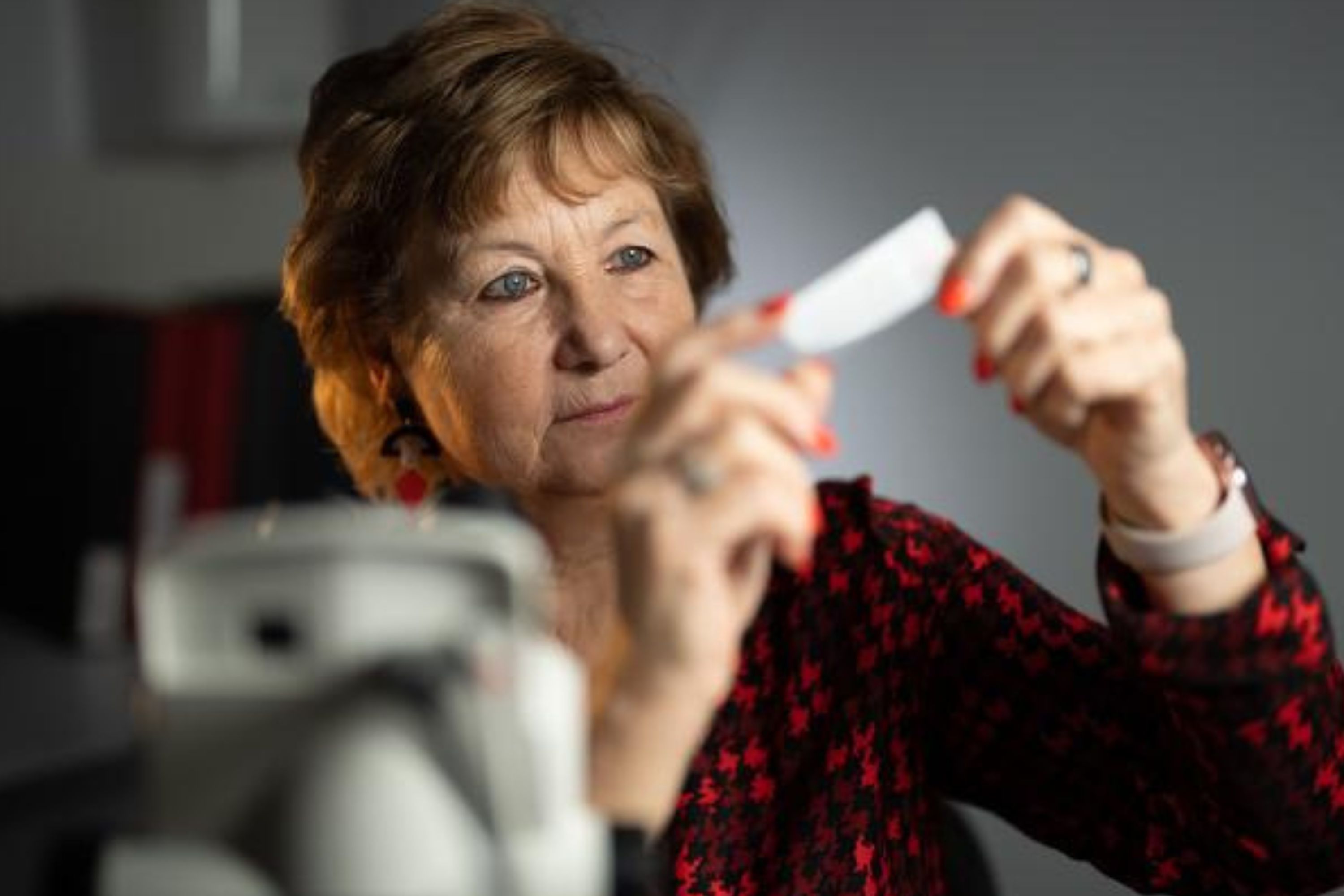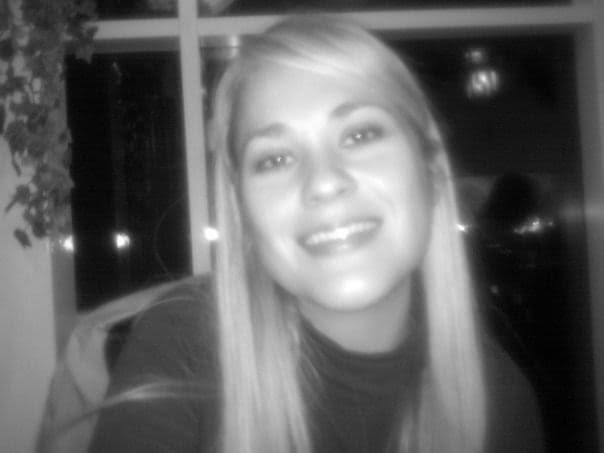What happened to Rachel Nickell and where is Robert Napper now? ITV documentary Cold Case Forensics investigates her murder
How new forensic evidence caught the real killer


ITV documentary Cold Case Forensics looks at the case of murdered woman Rachel Nickell - what happened to her, and how was her real killer caught?
The forensics team behind ITV's Cold Case Forensics documentary know that every contact leaves a trace - it’s just whether they're clever enough to find it. The new three-part true-crime series unlocks the secrets that finally solved some of Britain’s most controversial murder cases. Leading forensic scientists unpick clues that no one had unearthed before, covering the tragic case of Rachel Nickell on February 2. The young woman was found murdered on Wimbledon Common in 1992, and her horrifying death was expertly cracked over a decade later after previous failures in initial police investigations resulted in terrible failings. Read on to find out what happened to Rachel Nickell, and how her real killer was eventually caught - after the wrong man was jailed.
For some lighter viewing on ITV, fans have been asking when does Nolly start? Those eager for a start date for the show depicting life of soap legend Noele Gordon, don't have long to wait. Nolly filmed across several locations, with some being as glamorous and exciting as the woman herself. Those who like to know where their favourite shows were shot, have also been asking where Hotel Portofino filmed - the answer might be surprising.
What happened to Rachel Nickell?
Rachel was stabbed 49 times in the neck and torso and left to die on Wimbledon Common, on July 15, 1992 - she was 23 years old.
Rachel had been out walking with her two-year-old son Alexander, when an assailant carried out the stabbing. She immediately died at the scene, after also being sexually assaulted. The assailant fled and a passer-by found Alexander clinging to his mother's body, repeating "Wake up, Mummy". Rachel lived near Wimbledon Common with her partner André Hanscombe and their son, at the time of her death - she and Alexander frequently walked their dog on Wimbledon Common, and the murderer struck when the pair passed through a particularly secluded area of the common.

The Metropolitan Police undertook the initial investigation, and huge press coverage and public outcry due to the nature of the crime, resulted in increased pressure to name a suspect. Thirty-two men were questioned, with the investigation quickly turning to a man named Colin Stagg, who frequently walked his own dog on the Common. There was no forensic evidence linking Colin to the scene, but police asked criminal psychologist Paul Britton to create an offender profile of the killer, and decided Colin fit the profile. The psychologist designed a covert operation, code-named Operation Edzell, in order to eliminate or implicate Stagg. The operation implicated him, and Stagg was arrested for the crime, and held in custody for a year despite not being guilty - the operation was later widely criticised by the media and the trial judge.

What did Colin Stagg admit to?
Colin Stagg never admitted to anything. Operation Ezdell was found to be a humiliating way to try and implicate him, involving a female undercover police officer with the pseudonym Lizzie James, writing Stagg explicit letters.
Parenting advice, hot topics, best buys and family finance tips delivered straight to your inbox.
By the end of their correspondence, Lizzie was almost demanding that Stagg confess to murder in return for sex, telling him she fantasied about having a knife held to her throat while engaging in sexual activity. When details of the operation came to light, the case was overturned at the Old Bailey in 1994 and Stagg released. Mr Justice Ognall refused to put any evidence obtained by the undercover officer to the jury, saying police had attempted to force incrimination by "deceptive conduct of the grossest kind".
When the case remained unsolved for a further decade, Stagg had to live with the consequences of his attachment to it, claiming he was unable to get a job and harassed in the street. In 2008, he was awarded £706,000 in compensation from the Home Office, and an apology from Scotland Yard. Former Assistant Commissioner John Yates said in the statement "In August 1993 he was wrongly accused of Miss Nickell's murder. It is clear he is completely innocent of any involvement in this case and I today apologise to him for the mistakes that were made in the early 1990s. We also recognise the huge and lasting impact this had on his life and, on behalf of the Metropolitan Police, I have today sent him a full written apology."
Robert Napper, rapist to many, killer to two. Question is concerning Napper is was there further murders that maybe at his hand. pic.twitter.com/dqlHlvfbvcJuly 27, 2021
How was Robert Napper caught?
Rachel Nickell's real killer, Robert Napper, was caught by modern DNA enhancement techniques not available at the time.
Dr Angela Gallop and her team of forensic experts were called in to re-examine the evidence. She told ITV she was shocked to discover very limited DNA evidence had been recovered from swabs and tapings taken from Rachel's body when she died. She said "When we were faced with a sample that hadn't given any DNA results at all, when it really should at least have given the result from Rachel herself in this intimate part of her body, then we knew that something was very wrong. You can't have that sort of finding without finding a proper explanation for it. You can't have a loose end like that. Forensic scientists don't like loose ends."
Dr. Angela's forensic profiler, Andy McDonald and his team, developed a new process allowing the search for DNA to continue. The DNA enhancement matched DNA from Rachel's jeans to known criminal Robert Napper, who was already incarcerated in Broadmoor for the murder of a mother and daughter 16 months after Rachel's murder. Andy said "We went through all the different people that the police had as people of interest and there was only a match to one individual. Everyone else was excluded. And that match was to a man called Robert Napper."
Where is Robert Napper Now?
Robert Napper was sentenced to indefinite detention at Broadmoor Hospital, where he currently remains. Mr Justice Griffiths Williams concluded his sentencing by addressing Napper with "You are on any view a very dangerous man".
Napper also admitted to several rapes and attempted rapes, all with striking similarities. Reporter Jeff Edwards said "In at least two incidents, the victims were young women out walking with young children, with toddlers or with babies in pushchairs, buggies. And it's extremely unusual - vanishingly rare - for rapists to strike and attack a woman when a child is present. Psychologically, I think, it's thought to be a deterrent. "
To confirm Napper's guilt, Dr Angela's team explored other forensic links to back up their DNA evidence. They made links between the crime scene and a toolbox in Napper's flat, along with a shoe print. In December 2008, Robert Napper pleaded guilty to Rachel Nickell's manslaughter on the grounds of diminished responsibility. Dr. Angela Gallop said "There was satisfaction in knowing that someone who committed this absolutely horrendous crime had been identified and justice had been done insofar as it ever could be for Rachel and her family. "

Who presents Cold Case Forensics?
Dr. Angela Gallop presents Cold Case Forensics, and was also the scientist behind the breakthrough in Rachel Nickell's case.
73-year-old Dr. Gallop became a senior biologist with the Forensic Science Service in 1974. There were very few women in the laboratory at this time, with male bosses believing women were unable to cope emotionally with the role. She visited her first crime scene in February 1978, in an attempt to solve the Huddersfield murder of Helen Rytka - she had been a victim of Peter Sutcliffe.
Since 1986, Dr. Gallop she has run her own forensic service companies, and solved notorious murder cases such as the deaths of Roberto Calvi, Lynette White, and Damilola Taylor. She also investigated the death of Diana, Princess of Wales - her findings concluded there was no evidence to support conspiracy theories. She has been awarded the Order of the British Empire for her contributions to forensic science, and had written many books on the subject. She regularly appears on television to offer insight and advice on murder cases.
Further ITV Features:
- Who is Barney Walsh, Bradley Walsh's son?
- What is The Romance Retreat and how can you apply for the ITV show?
- The Family Pile on ITV: Plot, cast and everything you need to know about the new comedy series
- When does Maternal start on ITV, and how many episodes are there?
- Where is Maternal filmed? Locations featured in the ITV drama
- Where is Winter Love Island 2023 filmed? Location of the latest series revealed
- What is The Confessions of Frannie Langton based on? The real inspiration behind the ITVX period drama
- Is Big Brother coming back for 2023 and what are the auditions like?
- Is A Spy Among Friends based on a true story or a book? Plus how to watch the Damian Lewis mystery thriller on ITVX
Video of the Week

Lucy is a mum-of-two, multi-award nominated writer and blogger with six years’ of experience writing about parenting, family life, and TV. Lucy has contributed content to PopSugar and moms.com. In the last three years, she has transformed her passion for streaming countless hours of television into specialising in entertainment writing. There is now nothing she loves more than watching the best shows on television and sharing why you - and your kids - should watch them.